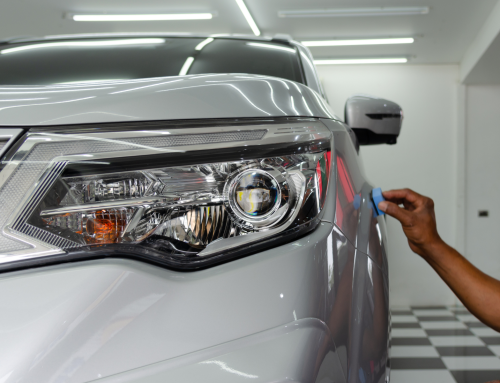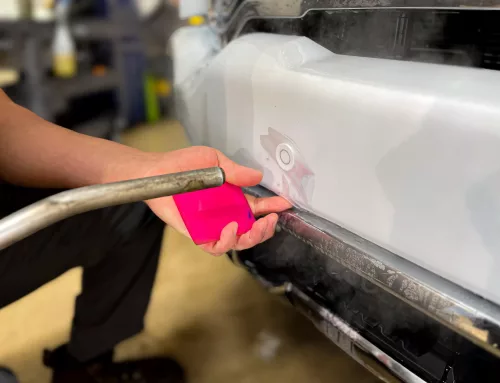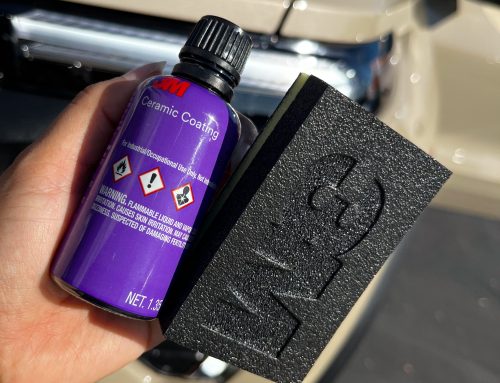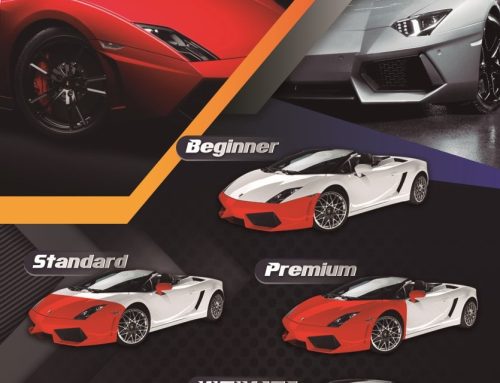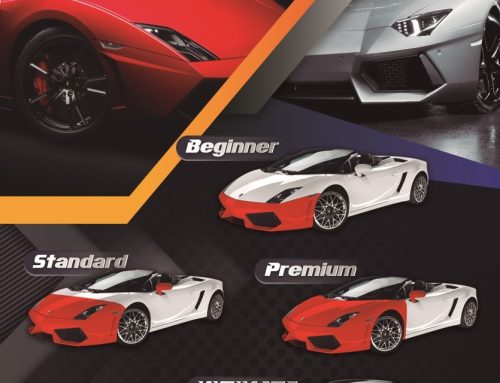What’s The Difference Between Ceramic Coating And Paint Protection Film?
What is ceramic coating? What is paint protection film? What are the advantages and disadvantages of each option? Before we compare ceramic coatings and paint protection film (PPF), let’s first understand what they are and what they promise for our vehicles.
Ceramic coatings are like a shield for your car’s paint, providing excellent protection against various environmental hazards while giving it a glossy finish. On the other hand, PPF is a transparent film that adheres to your car’s surface, acting as a barrier against scratches, chips, and other road debris.
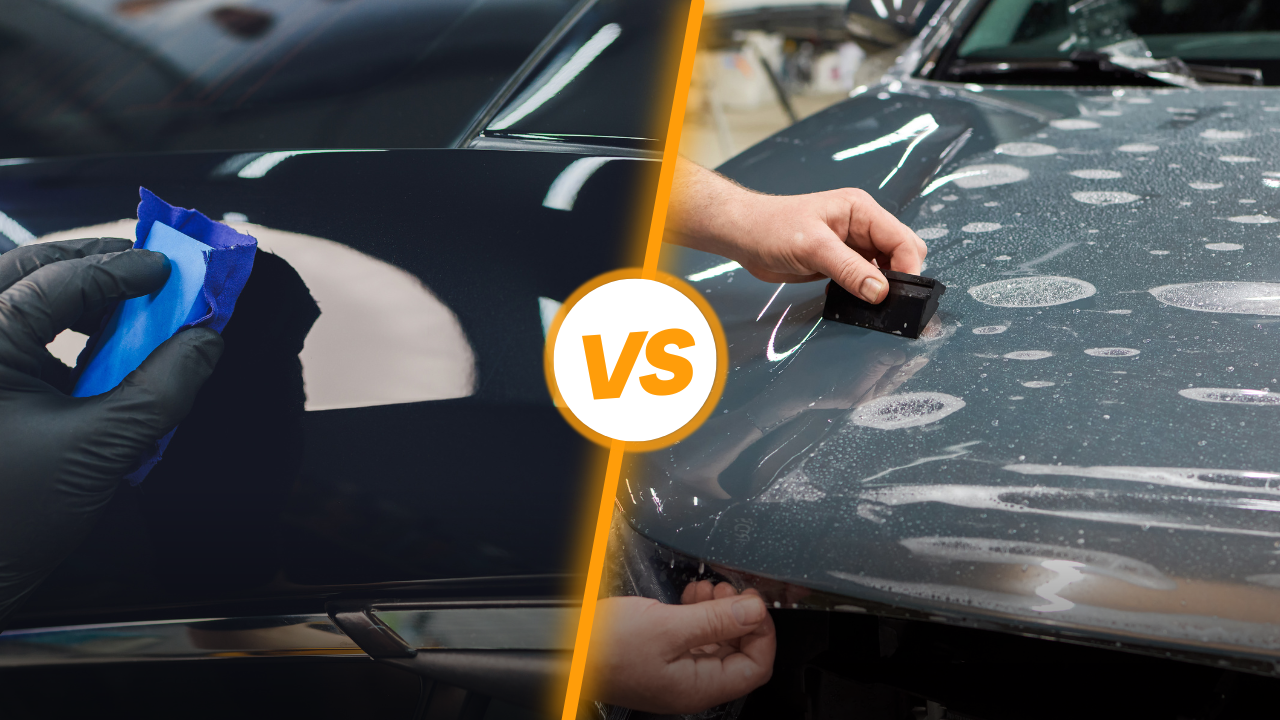
What is Ceramic Coating?
Ceramic coating, also known as nano-ceramic coating or glass coating, is a liquid polymer applied to the exterior of a vehicle’s paint. Once cured, it forms a protective layer that bonds with the surface, creating a hydrophobic and durable barrier. Ceramic coatings are designed to repel water, dirt, and other contaminants, making the vehicle easier to clean and maintain. They also offer some level of UV protection and can enhance the paint’s gloss and shine.
What is Paint Protection Film?
Paint Protection Film also know clear bra or PPF is a clear film applied to the painted surfaces of a vehicle. It forms a physical barrier against environmental contaminants, rock chips, scratches, and other hazards. PPF is thicker and more resilient than ceramic coatings, offering superior protection against impacts and abrasions. It’s often used in high-impact areas like the front bumper, hood, and side mirrors to shield the paint from damage. PPF can be self-healing to some extent, meaning minor scratches may disappear over time with exposure to heat.
Let’s delve into the differences between ceramic coatings and paint protection film
1) Application Process
- Ceramic Coating: Applied as a liquid polymer directly onto the vehicle’s paint surface. It requires thorough cleaning and preparation before application and typically involves multiple layers for optimal effectiveness.
- PPF: Installed as a physical film that adheres to the paint surface. It involves careful cutting and shaping of the film to fit the contours of the vehicle, often requiring professional installation for seamless coverage.
2) Protection Level
- Ceramic Coating: Provides protection primarily against environmental contaminants such as dirt, bird droppings, and UV rays. It enhances the paint’s gloss and makes it easier to clean.
- PPF: Offers superior protection against physical damage, including rock chips, scratches, and abrasions from road debris. It acts as a sacrificial layer, absorbing impacts to preserve the underlying paint.
3) Aesthetics
- Ceramic Coating: Enhances the paint’s appearance by providing a glossy, reflective finish. It adds depth and richness to the color while maintaining a smooth surface.
- PPF: Virtually invisible when properly installed, preserving the original look of the vehicle without altering its appearance. It does not affect the paint’s gloss or texture.
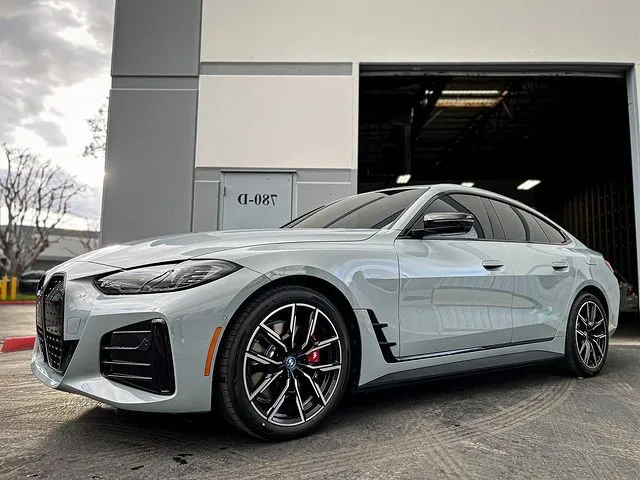
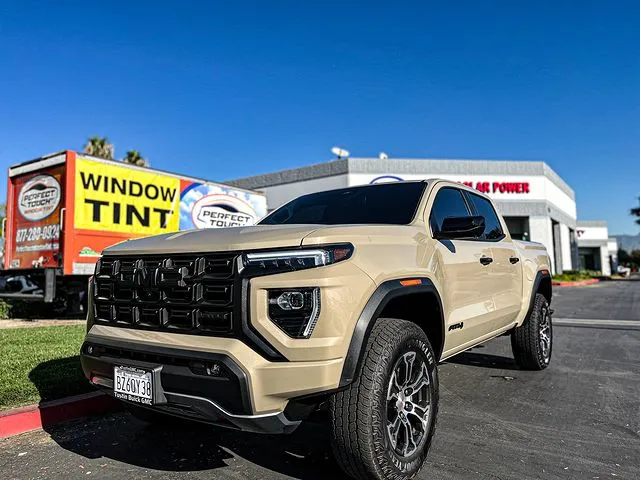
What’s Better? Ceramic Coating or PPF?
When it comes to safeguarding your vehicle’s paintwork, the debate between ceramic coatings and paint protection film (PPF) often sparks heated discussions among automotive enthusiasts. Both options offer unique benefits and drawbacks, making the choice between them a matter of personal preference and specific needs. Let’s explore the strengths and limitations of each to determine which option might be better suited for your vehicle.
Advantages of Ceramic Coating
Ceramic coatings provide a glossy, reflective finish that enhances the appearance of your vehicle’s paintwork. With a ceramic coating, washing your car becomes a breeze.
The slick surface created by the coating prevents contaminants from adhering to the paint, reducing the frequency of washes and minimizing the risk of swirl marks and scratches.
While ceramic coatings may require periodic reapplication every few years, they offer long-lasting protection against environmental hazards such as UV rays, oxidation, and chemical stains.
Advantages of Paint Protection Film (PPF)
PPF acts as a sacrificial layer, absorbing impacts from rocks, debris, and other road hazards to prevent damage to the underlying paint.
High-quality PPF can last a decade or more with proper maintenance, providing long-term protection against wear and tear. Its self-healing properties allow minor scratches to disappear over time with exposure to heat.
When professionally installed, PPF is virtually invisible, preserving the original look of your vehicle without altering its appearance. This makes it a popular choice for owners who want to protect their investment without sacrificing aesthetics.
Conclusion
In the battle between ceramic coatings and PPF, there’s no one-size-fits-all answer to the question of what’s better. It ultimately comes down to your priorities, budget, and the level of protection you desire for your vehicle. If you prioritize ease of maintenance and enhanced appearance, a ceramic coating may be the ideal choice. However, if ultimate protection against physical damage is your top priority, PPF offers unmatched durability and peace of mind. Whatever option you choose, both ceramic coatings and PPF provide valuable solutions for preserving the beauty and integrity of your car’s paintwork for years to come.



